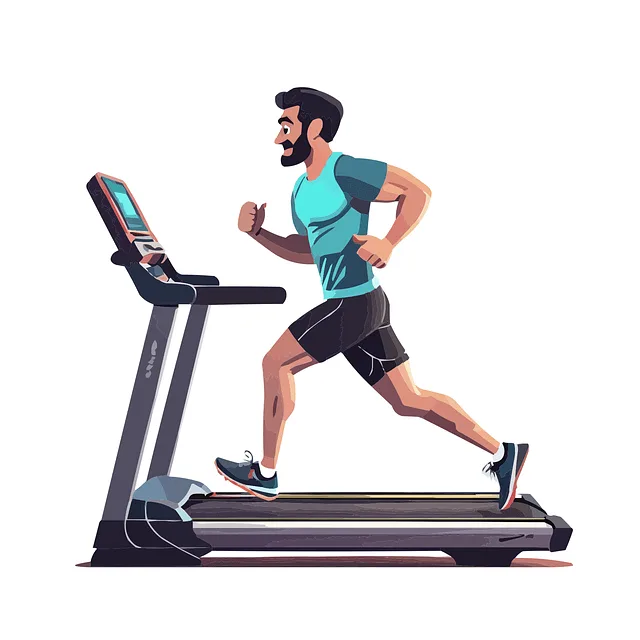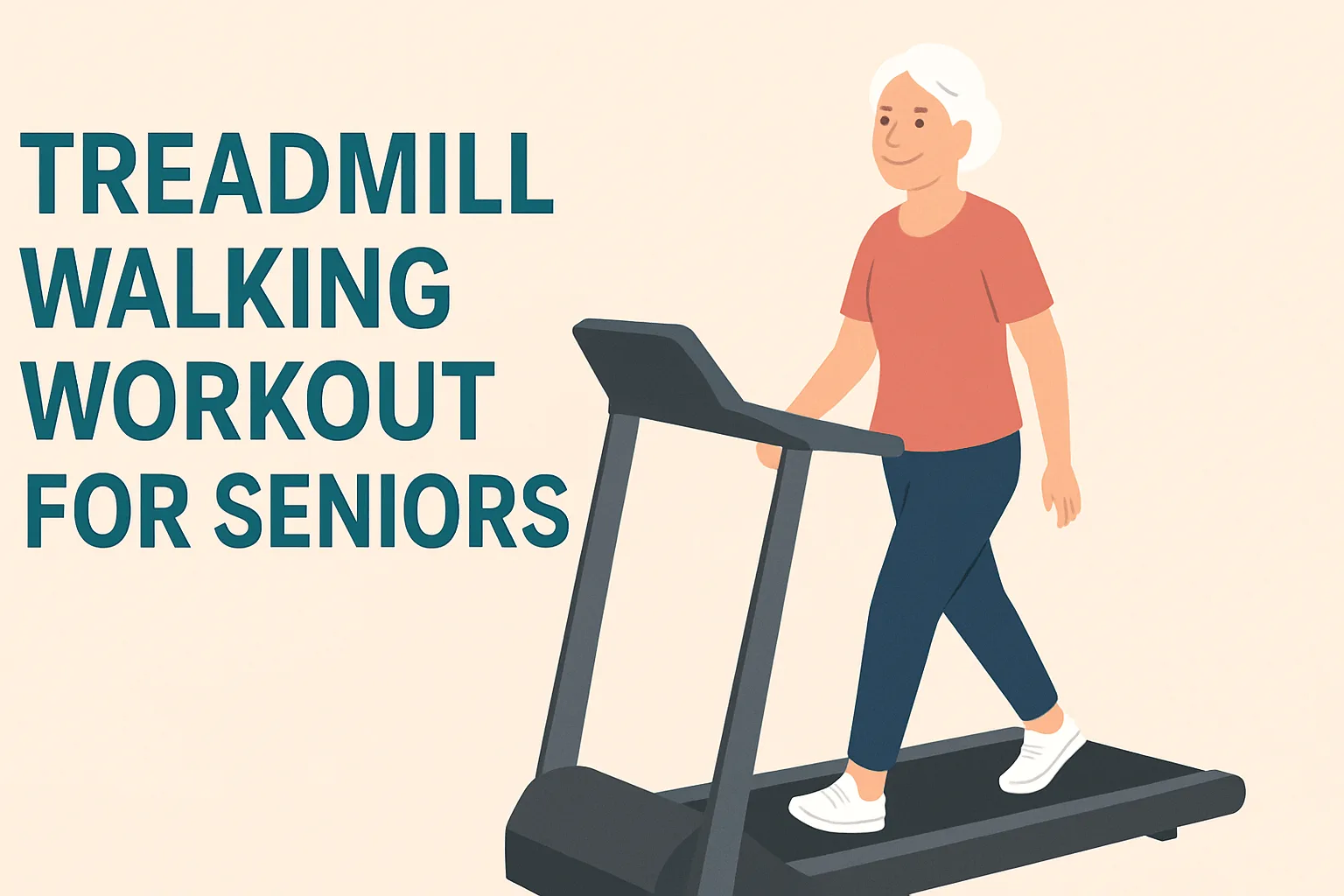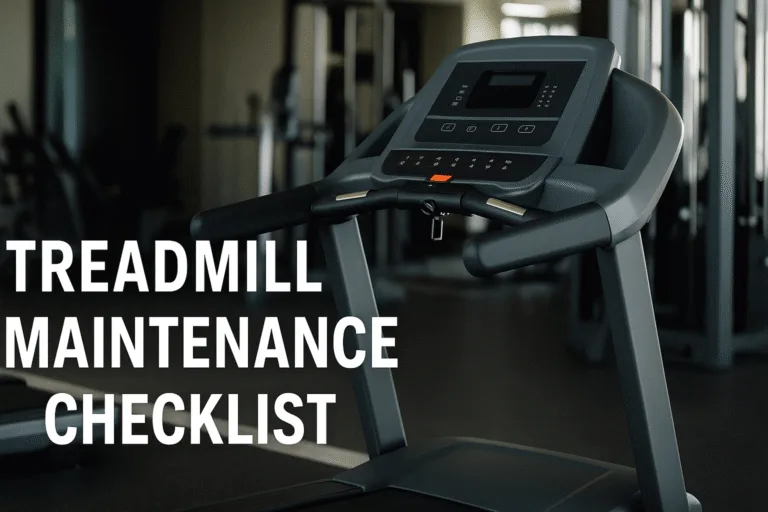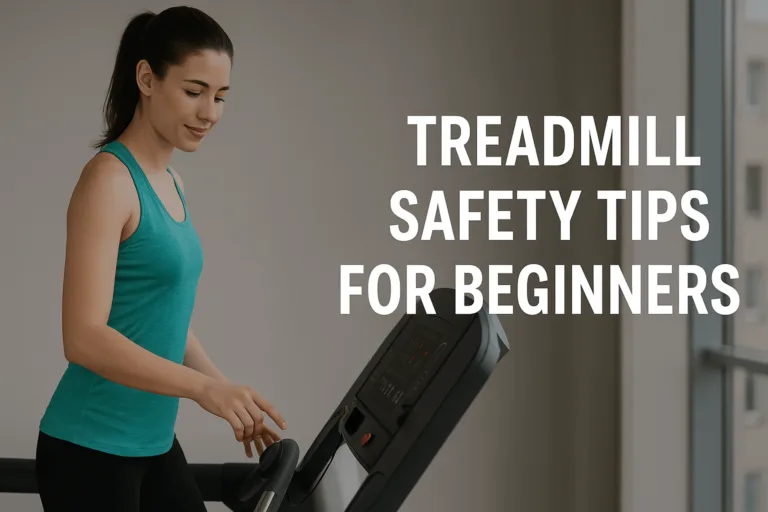Staying active is so important for older people, and using a treadmill can be a wonderful way to keep moving, boost heart health, and stay fit, all from the comfort of indoors. It’s perfectly normal for some seniors to feel a bit hesitant about how to use a treadmill safely and effectively.
This guide is here to help you use a treadmill safely and confidently, especially for seniors. We’ll cover everything from picking the perfect treadmill to setting it up and using the right techniques, ensuring you have a comfortable and risk-free workout experience.
Whether you’re a senior aiming to stay active or a caregiver supporting an elderly loved one, these tips will make your treadmill workouts not only safe but also enjoyable and beneficial.

Table of Contents
Who Is A Senior?
Typically, someone over the age of 65 is considered an older person. However, it’s important to recognize that aging varies so much from person to person! For example, a vibrant 75-year-old might be in better health than someone who is only 60. Different countries have their own definitions of what it means to be a senior. In Ghana, for instance, anyone aged 60 and above is considered a senior citizen.
Choosing the Right Treadmill for Seniors
Choosing the best treadmill for seniors is essential for ensuring safety, comfort, and user-friendliness. A treadmill designed with senior-friendly features can reduce the risk of injuries and enhance workout enjoyment. Consider the following key factors:
1. Low Step-Up Height
A treadmill with a low step-up height allows seniors to get on and off more easily, reducing the strain on their joints and helping them maintain balance. We recommend a step-up height of 8 inches or less.
2. Sturdy Handrails
Handrails should be long, sturdy, and easy to grip. They offer improved stability and comfort, particularly for seniors who are not accustomed to using a treadmill. Avoid treadmills with short or narrow handrails, as they may be hard to hold.
3. Simple and Clear Controls
The control panel of the treadmill must be user-friendly, featuring large buttons and a clear display. Simple start/stop and speed adjustment controls enable seniors to use the treadmill without any confusion.
4. Safety Key and Emergency Stop Button
A safety key is crucial for avoiding accidents. It attaches to clothing and immediately halts the treadmill if the user trips or falls. There should also be an easily visible emergency stop button that can be quickly pressed during an emergency.
5. Padded, Non-Slip Belt
A padded treadmill belt lessens the joint impact, ensuring a more comfortable experience when walking or jogging lightly. Additionally, the surface must be non-slip to avoid accidents.
6. Adjustable Speed and Incline
Seniors can start at a slow speed and gradually increase the intensity due to adjustable speed and incline settings. A minimum speed of 0.5 mph is perfect for beginners. The incline should be easy to adjust and optional.
7. Noise Level
A quieter treadmill can create a much more pleasant experience, particularly for older adults. It also helps keep the peace for everyone sharing the space. When shopping, aim for models with low-noise motors and smooth belts like the Sole F63.
8. Weight Capacity
The weight limit of a treadmill is crucial for safety and longevity. Treadmills designed with higher weight limits provide enhanced stability, leading to a smoother and more comfortable workout. If your weight is over the typical range of 250-300 lbs (113-136 kg), consider models capable of supporting 350 lbs (159 kg) or more.
Preparing for Treadmill Use
Proper preparation before using a treadmill is crucial for everyone, especially the elderly, to ensure safety and comfort. Taking the necessary steps in advance can help prevent injuries and enhance the overall experience.
1. Wear Proper Footwear and Clothing
Picking the right footwear is really important for staying safe on the treadmill! Seniors should opt for snug, supportive sneakers with great grip and cushioning to help reduce joint impact. It’s also wise to avoid slippery shoes, as they can increase the risk of falls. Plus, wearing comfortable, breathable clothing is essential to ensure easy movement.
2. Warm Up with Gentle Stretching
A brief warm-up gently awakens the muscles and joints, making movement smoother and helping to prevent any stiffness or strain. Here are some easy stretches we think are perfect for seniors:
- Ankle rolls – Helps with flexibility and balance.
- Leg swings – Loosens the hips and legs.
- Calf stretches – Prevents tightness in the lower legs.
- Shoulder rolls – Ease tension in the upper body.
3. Adjust the Treadmill Settings
Before starting, it’s a great idea to set the treadmill to a gentle pace, around 0.5 to 1.0 mph. This allows seniors to acclimate comfortably. If possible, keep the incline feature at zero or just a little bit raised to avoid any unnecessary strain. Additionally, it’s important that seniors can easily read the display panel and know how to adjust the speed or stop the machine whenever they need to.
4. Use the Safety Features
It’s really important for seniors to attach the safety clip to their clothing. This handy emergency stop feature automatically switches off the treadmill if they happen to lose their balance. Additionally, getting familiar with the stop button and handrails is a great idea so they can stop safely whenever necessary.
5. Stand in the Right Position
When stepping onto the treadmill, seniors should:
- Start by standing on the side rails, not directly on the belt.
- Hold onto the handrails for support before pressing the start button.
- Step onto the belt once it starts moving slowly.
How Can You Teach Seniors to Use a Treadmill Safely?
1: Explain the Treadmill Functions
Before stepping onto the treadmill, it’s helpful to explain some basic controls together. Make sure to cover how to start and stop the machine, adjust the speed and incline for a comfortable workout, and remember the emergency stop button and safety clip for extra peace of mind. Let them feel comfortable with the buttons before moving on.
2: Positioning and Getting Started
Ensure the seniors stand with their feet on the side rails before starting the treadmill. Begin at the lowest speed (0.5 – 1.0 mph) to help them adjust. Encourage a relaxed posture, standing upright with a slight bend in the arms.
3: Walking with Support
Advise them to grasp the handrails lightly while walking. Avoid holding too tightly, which may lead to strain. Maintain a natural and steady pace—short, controlled strides are ideal. Observe their balance and posture, making sure they don’t lean excessively forward or backward.
4: Gradually Adjust Speed and Confidence
Once they feel at ease, encourage them to walk without gripping the rails unless they need support for balance. If they are confident, make slight adjustments to the speed, ensuring it stays between 2.0 and 2.5 mph for beginners. Refrain from raising the incline during the initial sessions.
5: Teaching Safe Stopping Techniques
Show how to gently slow down before coming to a stop rather than stopping suddenly. It’s really important to use the safety clip in case of an emergency! Make sure to step off safely by placing your feet on the side rails before turning off the machine.
6: Cooling Down
Suggest a short period of leisurely walking to normalize the heart rate. Lead them in gentle stretches to prevent stiffness.
Individuals over 80 years old should not use the treadmill without assistance. At that age, it can be challenging for seniors to manage activities independently, and they may mishandle their exercise due to their age.
Benefits of Using a Treadmill for Seniors
For seniors, using a treadmill is an easy and efficient method to remain active and healthy. When proper precautions are taken, it provides numerous physical and mental health advantages. Here are some key benefits of treadmill use for seniors:
1. Improves Heart Health
Regular treadmill walking enhances cardiovascular health by strengthening the heart, lowering blood pressure, and improving circulation. These benefits can lessen the risk of heart disease, particularly for older adults.
2. Supports Joint Health and Mobility
Walking on a treadmill at a gentle pace is easy on your joints and helps keep them nice and flexible. Plus, it strengthens the muscles around your joints, which is great for improving your balance and mobility.
3. Helps Maintain a Healthy Weight
Regular use of the treadmill aids in burning calories and controlling weight. Keeping a healthy weight can lower the chances of developing conditions such as type 2 diabetes, high cholesterol, and joint pain.
4. Enhances Balance and Coordination
It enhances their coordination. Exercising in a secure and monitored setting enables seniors to concentrate on their balance, helping to lower the risk of falls while fostering a sense of stability.
5. Boosts Mental Health
Engaging in physical activities such as walking triggers the release of endorphins, enhancing mood and alleviating stress or anxiety. Consistent treadmill workouts can be beneficial in combating symptoms of depression and promoting mental well-being.
6. Easy to Use and Customizable
Treadmills enable seniors to adjust their speed and duration according to their comfort. Most models include safety features such as handrails and emergency stop buttons, ensuring a safe experience at home or in the gym.
7. Encourages a Consistent Routine
Treadmills provide a fantastic way for seniors to stay active, no matter what the weather is like outside. This convenience helps in creating and maintaining a consistent exercise routine, ensuring they can keep moving and feeling great.
Safety Tips for Seniors on a Treadmill
Using a treadmill can be an excellent way for seniors to remain active, but safety must always be a priority. Here are some safety tips for seniors to ensure a safe and comfortable workout on the treadmill.

Always Use the Safety Clip
Many treadmills have a handy safety clip that easily attaches to clothing. This thoughtful feature ensures that the treadmill stops automatically if you happen to fall or drift too far back. It’s a wonderful reminder for seniors to clip it on before starting their workout, bringing added peace of mind.
Start Slow and Gradually Increase the Speed
Beginners ought to begin at a slow speed, approximately 0.5 to 1.0 mph, to gain comfort before accelerating. Abrupt shifts in speed may cause them to lose balance, so any adjustments should be introduced progressively.
Hold the Handrails Lightly (But Don’t Rely on Them Too Much)
Handrails offer support, yet holding them too tightly can cause poor posture and strain on the wrists and shoulders. Seniors are advised to lightly grip the handrails for balance while attempting to walk naturally.
Pay Attention to Posture
Maintaining good posture is really important for a safe and enjoyable experience on the treadmill! Seniors are encouraged to stand tall with their shoulders back and keep their gaze straight ahead instead of looking down at their feet. It’s best to avoid leaning forward or backward, as this can help maintain better balance and stability.
Stay Hydrated
Even slight dehydration can lead to dizziness or tiredness. Older adults should have a water bottle within reach and sip regularly during their exercise sessions.
Wear Proper Footwear
Non-slip, supportive shoes are essential for treadmill workouts. They should offer excellent cushioning and traction to minimize slips and lessen joint strain.
Heart Rate Management
Using a heart rate monitor while on a treadmill helps seniors exercise safely by preventing overexertion and maximizing workout efficiency. It detects irregular heart activity, which reduces health risks. Keeping an eye on heart rate helps maintain a balanced workout, avoids dizziness, and improves cardiovascular health. Additionally, it aids in monitoring recovery and fosters regularity.
Avoid Distractions
Seniors ought to concentrate on their movement instead of multitasking. Engaging in activities like watching TV, texting, or reading while walking may result in missteps and falls.
Use a Low Incline or None at All
Walking on a steep incline can be challenging and raises the risk of falling. Seniors should stick to flat or low inclines (0-2%) unless otherwise advised by a fitness professional.
Always Cool Down After Walking
Abruptly stopping can lead to dizziness. Older adults should ease the treadmill down slowly and follow up with some light stretches.
Never Use the Treadmill Alone if Unsteady
If a senior experiences balance problems or is unfamiliar with treadmill walking, it’s advisable to have a caregiver, trainer, or family member close by for support.
Common Mistakes to Avoid When Teaching Seniors to Use a Treadmill
For seniors, using a treadmill is an excellent way to remain active, but improper usage can result in discomfort or injury. Here are some frequent mistakes to avoid when instructing seniors on safe treadmill use.
1. Holding Onto the Handrails Too Tightly

Many seniors grasp handrails firmly for support. While it’s fine to use them for balance at first, depending on them too much can lead to poor posture and shoulder discomfort. To encourage a more natural walking style, it’s better to promote a relaxed arm movement.
2. Skipping Warm-Ups and Cool-Downs
Starting treadmill walking without warming up can heighten the likelihood of muscle stiffness and injury. Seniors should begin with gentle stretches followed by a slow-paced walk before gradually increasing their speed. Likewise, concluding with a cool-down is essential for a safe bodily transition.
3. Starting at a Speed That’s Too Fast
A treadmill should always begin at the lowest speed, giving seniors a chance to adjust before speeding up. Starting too quickly can lead to imbalance or panic, raising the risk of falls. A gradual approach is the safest method to enhance their confidence.
4. Ignoring Posture and Walking Form
Common mistakes like leaning forward, looking down, or shuffling feet can cause discomfort or imbalance. Seniors are encouraged to stand upright, maintain a forward gaze, and take steady, natural steps. Good posture enhances stability and minimizes strain.
5. Overexertion and Pushing Beyond Limits
Seniors might aspire to reach the activity levels of their younger days; however, pushing themselves too hard can result in fatigue, dizziness, or potential injury. It’s crucial to begin with brief sessions at a manageable pace and slowly extend the duration as their stamina develops.
6. Not Using the Safety Features
Most treadmills are equipped with a safety key or emergency stop button, yet some seniors might forget or hesitate to use these features. It’s essential to remind them to attach the safety key to their clothing and to familiarize themselves with stopping the treadmill swiftly if they feel discomfort or a loss of balance.
Full article: 15 Common Treadmill Mistakes and How to Avoid Them
Alternative Exercises for Seniors Who Struggle with a Treadmill
Not every senior is at ease with using a treadmill, and that’s completely okay. There are various low-impact exercises available that offer comparable health benefits while being kinder to the joints and enhancing balance and safety. Below are some of the top alternative exercises for seniors who find treadmills challenging:
1. Stationary Bike
A stationary bike is an excellent option for seniors who find it challenging to walk on a treadmill. It offers a low-impact cardiovascular workout that enhances leg strength and boosts heart health while minimizing joint stress. Recumbent bikes, particularly beneficial for seniors with mobility concerns, feature back support for added comfort.
2. Chair Exercises
Chair exercises are ideal for seniors requiring additional stability. Basic seated movements like leg lifts, arm raises, and seated marches enhance circulation, flexibility, and strength. Using resistance bands can incorporate light strength training as well.
3. Walking with Assistance
For seniors who struggle with treadmill walking, using a walker, a cane, or a caregiver can offer a safer alternative. Whether walking indoors on a flat, non-slip surface or outdoors, this approach enables them to remain active while minimizing the risk of falls.
4. Water Aerobics
Water exercise alleviates joint pressure while delivering resistance for a comprehensive workout. Activities like water aerobics, shallow water walking, and swimming are great options for seniors, aiming to enhance strength, flexibility, and cardiovascular fitness without fall risks.
5. Elliptical Machine with Handles
For seniors capable of light weight-bearing exercises but having difficulty maintaining balance on a treadmill, using an elliptical machine with handles could be a preferable choice. This equipment offers a smooth, low-impact workout while also involving both the upper and lower body.
6. Tai Chi or Yoga
Tai Chi and yoga emphasize balance, flexibility, and gentle movements, making them ideal for seniors wary of treadmill workouts. These practices enhance posture, coordination, and mental relaxation. For individuals with limited mobility, chair yoga offers an excellent alternative.
7. Resistance Band Workouts
Seniors seeking to enhance strength without high-impact activities can benefit from resistance bands, which provide an easy and effective substitute. These bands can be utilized while seated or standing, allowing for muscle strengthening and greater flexibility without the dangers linked to treadmill workouts.
Conclusion
Helping seniors learn how to use a treadmill safely is a wonderful way to keep them active while minimizing the risk of injury. By taking a step-by-step approach and starting at a gentle speed, seniors can gradually build their confidence as they exercise.
Remembering to encourage them to wear comfortable shoes, stay hydrated, and avoid gripping the handrails too tightly can make a big difference in their experience.
It’s wonderful to encourage seniors to use the treadmill regularly at a pace that feels comfortable for them, as it can greatly enhance their health and mobility. Of course, keeping safety as our top priority is key! By providing proper supervision, encouraging gradual progress, and being attentive to how their bodies feel, we can help ensure a safe and enjoyable experience for everyone.
Before starting any treadmill routine, seniors should consult their doctor to ensure the exercise is suitable for their health condition. With the right guidance and precautions, they can enjoy the benefits of walking on a treadmill safely and comfortably.
Frequently Asked Questions
Is it safe for seniors to use a treadmill?
Yes, seniors can safely use a treadmill by adhering to certain precautions. They should select a treadmill equipped with stable handrails, an emergency stop function, and a user-friendly control panel. Beginning at a gradual speed and utilizing the safety clip can help minimize the risk of falls.
What speed should a senior walk on a treadmill?
Seniors are advised to begin at a slow pace, usually around 0.5 to 1.0 mph, to build their confidence. As they gain stability, they can slowly raise their speed to between 1.5 and 2.5 mph, depending on their fitness level. Prioritizing safety is essential.
Should seniors use an incline on a treadmill?
A gentle incline of 0.5% to 1% can mimic outdoor walking, yet seniors should initially use a flat surface. Once they’re comfortable, they may slowly elevate the incline but should steer clear of steep grades to avoid putting stress on their joints.
Should seniors hold onto the treadmill handrails while walking?
Handrails provide valuable balance assistance, yet seniors should refrain from grasping them too firmly. It’s acceptable to use handrails for light support, but allowing for natural walking promotes better posture and stability.
How can I help a senior get on and off a treadmill safely?
Make sure the treadmill is fully stopped before stepping on or off. Users should grip the handrails while getting on and place both feet on the side rails initially. When coming to a stop, they should reduce the speed gradually before carefully stepping off.





